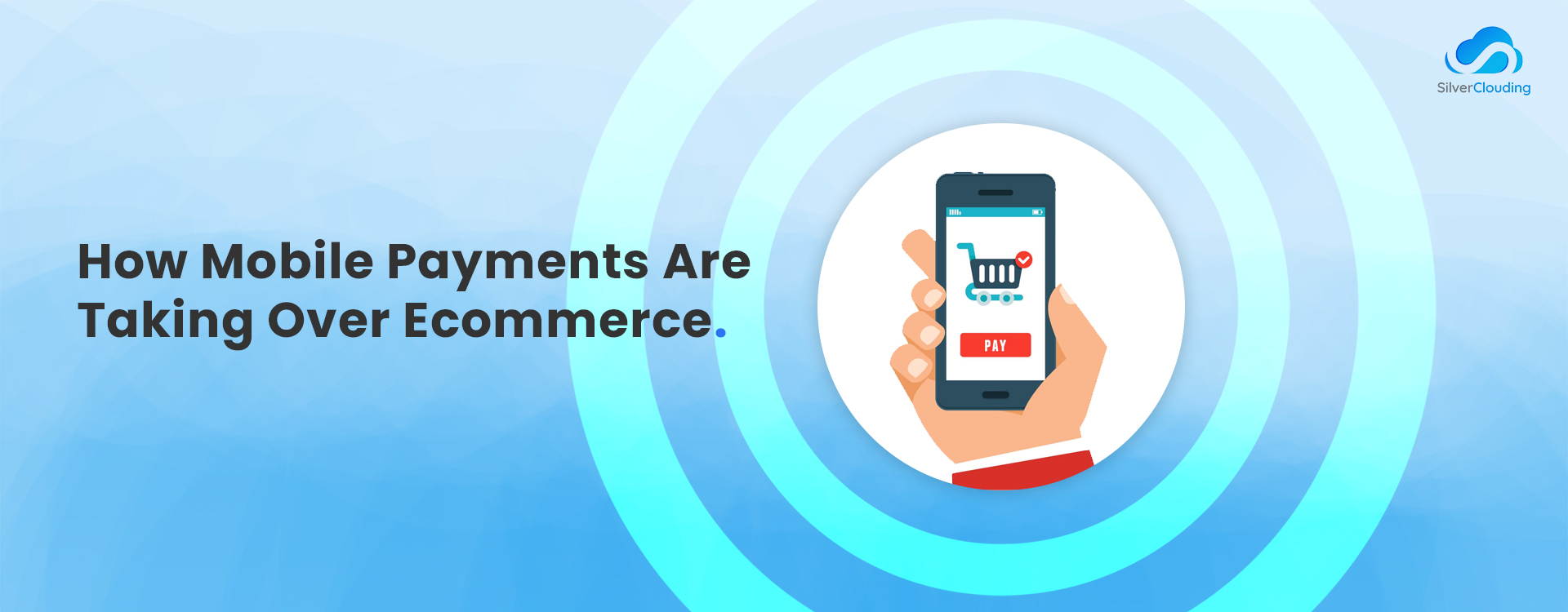What Are Mobile Payments for Ecommerce?
Types of Mobile Payments for Ecommerce & How They Work
The pros and cons of using mobile payments for eCommerce
How mobile payments for eCommerce is changing the game?
How to Prepare Your eCommerce Store for Mobile Payments
Why are mobile payments for eCommerce so popular?
Commerce is a two-way street. The customer puts in their buying intent, and the merchant takes it and turns it into a sale. With the ever-growing popularity of smartphones and tablets, eCommerce is seeing a boom in mobile payments. So what are these mobile payments, and how are they changing the way we shop?
What Are Mobile Payments for Ecommerce?
Mobile payments for eCommerce are quickly becoming the go-to method of payment for online shoppers as in Shopify services. They’re simple, convenient, and widely accepted. Various mobile payment options are available, so shoppers can find the one that’s right for them.
Payment apps like PayPal and Venmo allow users to make purchases without entering their credit or debit card numbers. This is great for people who want to avoid carrying multiple cards or entering complex account information.
Another popular option is Apple Pay. With Apple Pay, users can use their iPhone or iPad to make payments at participating stores. Simply hold your device up to the reader and follow the onscreen instructions.
Other payment options are also available, such as Android Pay and Samsung Pay. These apps work with a variety of devices, including smartphones and tablets.
Overall, mobile payments for eCommerce are a great way to make purchases online. They’re easy to use, convenient, and widely accepted.
Types of Mobile Payments for Ecommerce & How They Work
Mobile payments are quickly becoming the preference for many online shoppers. Here’s a look at some of the most popular types of mobile payments, how they work, and some of the benefits they offer.
- Apple Pay
Apple Pay is one of the most well-known mobile payment systems. It allows users to buy store items by tapping their phones on contactless terminals. Apple Pay is available on iPhones and recent Android devices.Through the above article, we can recommend you the latest dresses.Shop dress in a variety of lengths, colors and styles for every occasion from your favorite brands.
- Android Pay
Android Pay is another well-known mobile payment system. It works with Android smartphones and tablets. Like Apple Pay, it allows users to make purchases by touching their phones to contactless terminals. Android Pay is available on devices from Google, Samsung, LG, Motorola, and other companies.
- Samsung Pay
Samsung Pay is a newer mobile payment system that works with Samsung smartphones and tablets. Like Android Pay and Apple Pay, users can make purchases by touching their phones to contactless terminals. Samsung Pay is not yet as widespread as those two systems, but it is increasing.
The pros and cons of using mobile payments for eCommerce
As mobile payments for eCommerce continue to grow, businesses are beginning to see the benefits of using them over traditional methods such as debit and credit cards. Here are some of the biggest pros of mobile payments for eCommerce:
-They’re fast and easy: With most mobile payment platforms, transactions can be completed in seconds.
-They’re secure: Many mobile payment platforms use encryption technology to keep your personal information safe and secure.
-They’re convenient: Many mobile payment platforms allow you to pay with just a few taps on your phone.
-They’re affordable: Mobile payments are typically cheaper than other forms of compensation.
However, there are also some drawbacks to using mobile payments:
-They’re not always available: Not all merchants accept mobile payments, so checking before making a purchase is essential.
-All customers may not accept them: Some customers may not be able to use mobile payments because they don’t have a compatible phone or app.
-They can be risky: If your phone is stolen or lost, your personal information could be compromised if your credit card information was stored on the device.
How mobile payments for eCommerce is changing the game?
Mobile payment is changing the game for both customers and merchants. Many companies are shifting their business models to accommodate this new technology; they can use an online check stub maker to track salaries and payments to their employees, but how will mobile prices change the game?
The answer lies in customer satisfaction. Customers are becoming more demanding regarding their preferred payment method, and they expect businesses to meet that demand or risk losing them as loyal customers.
For example, Starbucks has been leading in mobile payment methods and now accepts Apple Pay at all locations nationwide. This ease of use has increased sales among iPhone users since they no longer need to carry around cash or credit cards anymore.
In addition, retailers have begun offering incentives such as coupons for mobile payments, encouraging shoppers even further. So, whether you are a merchant looking to lead the way in mobile payments for an eCommerce business or you are simply looking for easier ways to shop online, it’s clear that this new technology is here to stay.
How to Prepare Your eCommerce Store for Mobile Payments
Now that you have an overview of the basics, how can you optimize your store for mobile payments for eCommerce?
First of all, you’ll need to cover the basics: you’ll need to sign up for a merchant account and payment gateway. Most eCommerce platforms come with built-in payment gateways.
A merchant account is an intermediary to hold funds from eCommerce sales before transferring them to your regular account. Generally speaking, most payment gateways will provide a merchant account, allowing you to accept payments through various methods.
A payment gateway is a digital “gateway” that sends customer details to a payment processor, which contacts the bank to authorize the payment and deposit it in your account. When selecting a payment gateway, ensure access to an API is provided so you can make custom changes to your storefront.
Adding extra payment options to your checkout process is usually a straightforward process.
The future of mobile payments in e-commerce
There is no doubt that mobile payments for eCommerce are quickly taking over eCommerce. A recent study by the Retail Strategy Group revealed that mobile payments accounted for almost half (49%) of all online retail transactions in 2020. Even more impressive is that this number is expected to grow even higher.
Why are mobile payments for eCommerce so popular?
There are a few reasons why mobile payments for eCommerce are so popular. First and foremost, they’re fast and easy. Open your wallet app, scan your barcode, and pay without ever having to leave your shopping cart or checkout page. Second, they’re secure. Your credit card information is never stored on the payment app or the web server where it’s processed, so you can be sure it’s safe and private. Finally, they’re constantly evolving. As new payment methods are introduced (like Apple Pay), existing ones (like PayPal) improve and get more convenient.
So what does this mean for eCommerce businesses?
You need to start thinking about mobile payments for eCommerce if you want to stay competitive. Not only do they offer convenience and security benefits, but they also boost conversion rates – especially for high-value items.
Conclusion
Mobile payments for eCommerce are quickly becoming the norm for eCommerce shoppers. A recent survey found that almost half of all online shoppers use mobile devices to pay for purchases.
There are many reasons why mobile payments for eCommerce are such a popular choice for shoppers:
- They’re easy to use.
- They’re fast and convenient.
- They offer a sense of security because customers can always feel confident that their payment information is safe and secure.
As mobile payments for eCommerce continue to grow, eCommerce merchants need to understand how to integrate them into their businesses best. By following these tips, you can ensure that your customers have an enjoyable shopping experience and that they leave your site with a feeling of satisfaction.
Reference: https://www.groovecommerce.com/ecommerce-blog/how-mobile-payments-are-taking-over-ecommerce




